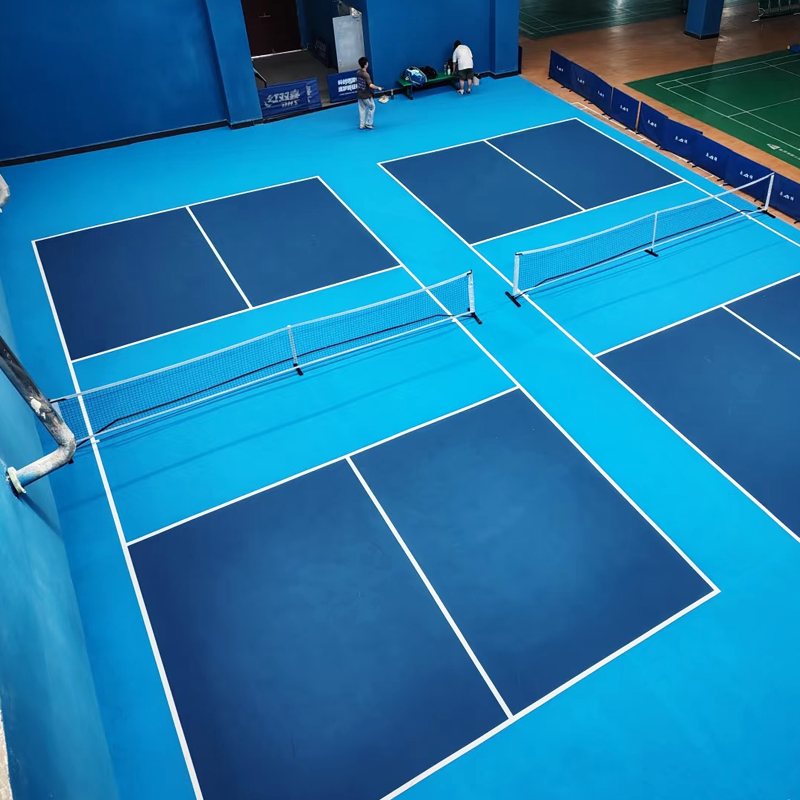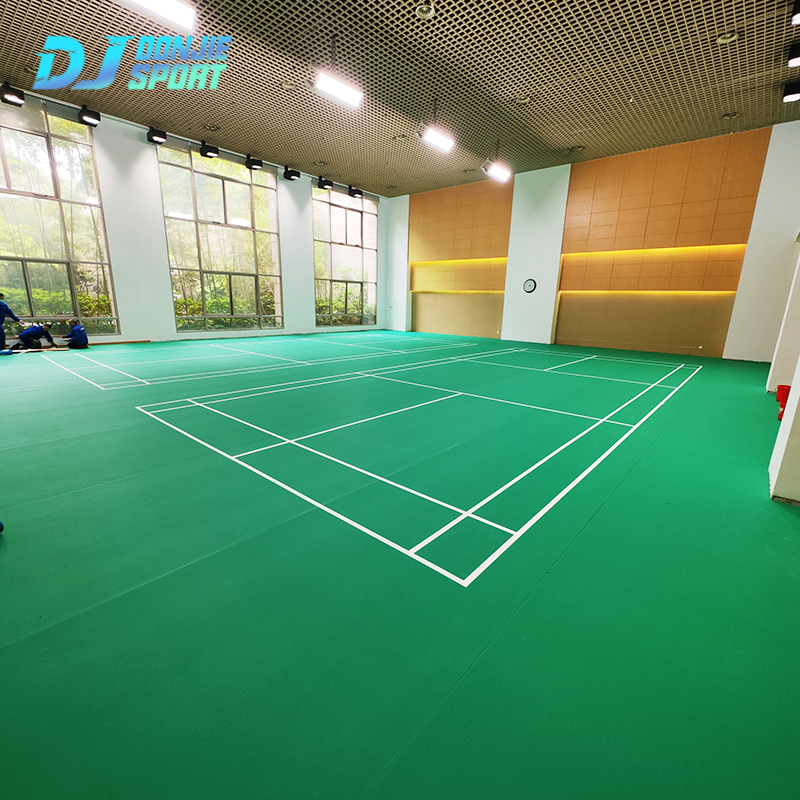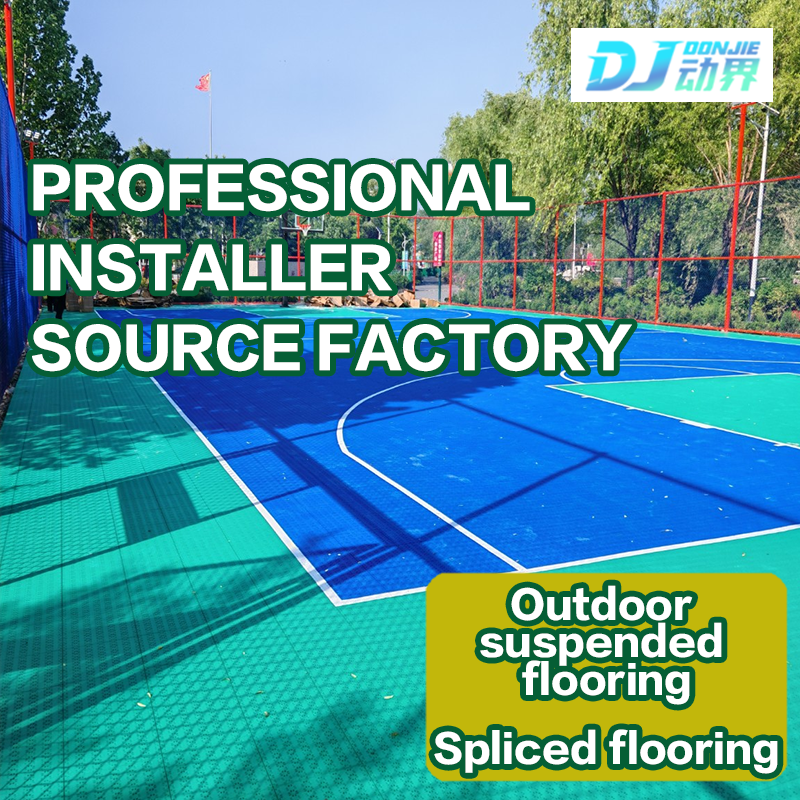A sports wooden floor is typically crafted from high – quality solid wood or engineered wood. The surface undergoes special treatment, endowing it with excellent elasticity, wear resistance, and impact resistance. This type of flooring is specifically designed to meet the demanding requirements of sports activities, providing athletes with a safe and comfortable playing surface. For example, the maple – wood floors used in many professional basketball courts are known for their fine texture, high density, and outstanding performance in sports – related functions.

The Multifaceted Efficacy of Sports Wooden Floors
Exceptional Shock Absorption and Cushioning
Sports wooden floors are engineered to have outstanding shock – absorption capabilities. When athletes engage in high – impact sports such as basketball, volleyball, or gymnastics, every jump and landing generates significant force. A quality sports wooden floor can absorb up to 53% or more of this impact energy. This is equivalent to having a soft cushion beneath the athlete’s feet. For instance, in a professional basketball game, players often make powerful jumps and quick landings. The shock – absorbing property of the wooden floor reduces the stress on their knees, ankles, and spine, minimizing the risk of injuries like sprains, strains, and long – term joint damage.
Superb Anti – Slip Performance
The surface friction coefficient of sports wooden floors is carefully calibrated to be within the range of 0.4 – 0.7. This range is not too slippery nor too sticky. In a tennis match, players need to make rapid starts, stops, and changes in direction. The anti – slip surface of the sports wooden floor provides them with the necessary grip. It ensures that their feet do not slide out from under them during quick movements, which could lead to falls and injuries. At the same time, it does not impede their movement with excessive friction, allowing for smooth and efficient play.
High Wear Resistance and Longevity
High – quality sports wooden floors have a specially treated surface. They can endure frequent use, such as daily training sessions and regular competitions in a sports arena. The wear – resistant layer on the surface is designed to withstand the constant friction from athletes’ shoes, equipment, and other factors. A well – maintained sports wooden floor in a school gymnasium can last for decades, providing a stable and reliable playing surface throughout its lifespan. This durability also means lower replacement and maintenance costs in the long run.
Environmental Friendliness and Health – Consciousness
These floors are manufactured using environmentally friendly materials. They meet national environmental protection standards, which means they do not release harmful substances such as formaldehyde, benzene, or other volatile organic compounds (VOCs) into the air. In a children’s sports training center, where young athletes spend a significant amount of time, the use of an environmentally friendly sports wooden floor ensures that they are not exposed to any harmful chemicals. This promotes a healthy and safe environment for sports activities, protecting the well – being of all who use the facility.
Ideal Venues for Sports Wooden Floors
Basketball Courts
Basketball is a fast – paced and physically demanding sport. Players constantly make rapid dashes, sharp turns, powerful jumps, and forceful landings. A sports wooden floor is an ideal choice for basketball courts. Its outstanding elasticity offers a good bounce, allowing players to better control the ball during dribbling and shooting. For example, in the NBA, the high – quality maple – wood floors in arenas like Madison Square Garden provide players with a perfect surface. The excellent shock – absorption and cushioning properties also protect players from potential injuries during high – impact movements, making it easier for them to perform at their best.
Badminton Halls
Badminton requires players to have extremely flexible footwork and rapid reaction speeds. They need to move quickly around the court, make sudden stops, and change directions instantaneously. A sports wooden floor with its carefully calibrated surface friction coefficient offers excellent anti – slip performance. This ensures that players’ feet can firmly grip the floor during quick lateral movements, lunges, and jumps. For instance, in professional badminton tournaments, the sports wooden floors enable players to execute precise shots and agile maneuvers without the worry of slipping, enhancing their overall performance.
Volleyball Courts
Volleyball is a sport that involves a lot of jumping, diving, and quick movements. The court surface needs to have a certain degree of elasticity and shock – absorption. Sports wooden floors are well – suited for volleyball courts as they can effectively reduce the impact force on players’ knees and ankles when they jump and land. In a professional volleyball match, players often make multiple high – altitude jumps. The shock – absorbing property of the sports wooden floor helps to ease the pressure on their joints, minimizing the risk of joint – related injuries and allowing them to play with more confidence.
Dance Studios
Dance is an art form that requires a floor with a comfortable feel and good elasticity. Dancers need to perform a variety of movements, including jumps, spins, and stretches. A sports wooden floor provides the necessary support and flexibility. When a ballet dancer performs a grand jeté or a contemporary dancer executes a series of complex floor – work movements, the elastic sports wooden floor can help them complete the movements more smoothly. It also reduces the stress on their feet and joints during long – term training and performances, protecting their physical health.
Gyms
Gyms are places where people engage in a wide range of fitness activities, from aerobic exercises like Zumba and aerobics to strength – training exercises such as weightlifting and bodyweight training. A sports wooden floor’s comfort and shock – absorption capabilities make it suitable for these activities. During high – impact aerobic workouts, the floor can absorb the impact of jumping and landing, reducing the stress on the body. For strength – training, the stable and non – slippery surface provides a reliable base for exercises, ensuring the safety of gym – goers.
Multi – functional Stadiums
Multi – functional stadiums are designed to host various sports events, concerts, exhibitions, and other large – scale activities. A high – quality sports wooden floor can meet the diverse needs of these different events. For sports, it provides the necessary performance – enhancing features such as good shock – absorption, anti – slip properties, and elasticity. When hosting a concert or an exhibition, the warm and elegant appearance of the wooden floor can enhance the overall atmosphere of the venue. For example, a large – scale multi – functional stadium might host a basketball game one day and a music concert the next. The sports wooden floor can adapt to both scenarios, demonstrating its versatility and importance in modern stadium construction.

Maintenance Tips for Sports Wooden Floors
Regular Cleaning
Daily, use a clean soft – bristle broom or a vacuum cleaner to remove dust and debris from the sports wooden floor. This helps prevent small particles from scratching the surface during sports activities. For example, in a busy basketball court, dust and small stones carried in by shoes can cause scratches if not removed promptly. Regularly, about once a week, use a slightly damp mop along with a specialized floor cleaner. Make sure the mop is not overly wet to avoid water seeping into the floor joints and causing swelling or deformation. Choose a cleaner specifically designed for sports wooden floors to ensure it won’t damage the surface treatment and maintain its performance – related properties.
Humidity and Temperature Control
Maintaining a relatively stable indoor temperature and humidity is crucial for the longevity and performance of sports wooden floors. The ideal temperature range is between 18 – 24℃. When the temperature is too high, the wood may dry out and crack; when it’s too low, the wood can absorb moisture from the air and expand. The humidity should be kept between 40% – 60%. High humidity can lead to swelling, warping, and even the growth of mold and mildew on the floor, while low humidity can cause the wood to shrink and develop gaps. In a dance studio, for instance, proper use of air – conditioning and humidifiers or dehumidifiers according to the season can help maintain the right environmental conditions.
Avoiding Improper Usage
Prevent high – heeled shoes and hard – soled shoes from being worn on the sports wooden floor. The sharp heels of high – heeled shoes can easily puncture and scratch the floor surface, and hard – soled shoes can also cause significant wear and tear. In addition, avoid dropping heavy objects onto the floor, as this can cause dents and cracks. When moving sports equipment, use trolleys or lift the equipment carefully to prevent dragging and impact. For example, in a gym, care should be taken when moving weightlifting equipment. Also, keep the floor away from direct sunlight for extended periods. Ultraviolet rays in sunlight can fade the color of the wood and affect its physical properties over time. Install curtains or blinds in venues to block sunlight.
Periodic Inspection and Maintenance
Regularly check the floor for any signs of cracks, looseness, or deformation. Monthly inspections can help detect small problems early. If a crack is found, it can be filled with a suitable wood – filling compound to prevent further expansion. Annually, it is advisable to carry out protective treatments such as waxing or applying a special sports – floor maintenance oil. Waxing can form a protective layer on the surface, enhancing its wear resistance and giving it a shiny appearance. In some cases, after years of use, the floor may need to be sanded and refinished to restore its smoothness and performance, especially in high – traffic areas like professional sports arenas.



